Filter by
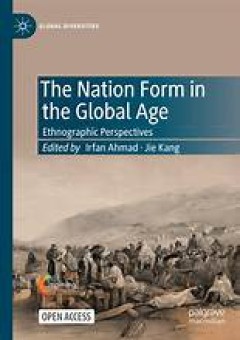
The Nation Form in the Global Age
This open access book argues that contrary to dominant approaches that view nationalism as unaffected by globalization or globalization undermining the nation-state, the contemporary world is actually marked by globalization of the nation form. Based on fieldwork in Africa, Asia, Europe and the Middle East and drawing, among others, on Peter van der Veer’s comparative work on religion and nat…
- Edition
- 1
- ISBN/ISSN
- 978-3-030-85580-2
- Collation
- oer.unej.ac.id
- Series Title
- Global Diversities
- Call Number
- 306

Internal Diversity
This book explores the interrelation between diversity in migrants’ internal relations and their experience of inequality in local and global contexts. Taking the case of Hamburg-based Iranians, it traces evaluation processes in ties between professionals – artists and entrepreneurs – since the 1930s, examining migrants’ potential to act upon hierarchical structures. Building on long-te…
- Edition
- 1
- ISBN/ISSN
- 978-3-030-27790-1
- Collation
- oer.unej.ac.id
- Series Title
- Global Diversities
- Call Number
- 306

Anxiety as Vibration
This open access book draws on the work of Deleuze and Guattari alongside Lacan and Freud to offer a radical psychosocial survey of the status of anxiety. Taking a multidisciplinary approach, the book examines key issues in contemporary diagnosis and points towards possibilities for forging a more creative clinic. Departing from a feminist, non-Oedipal positioning towards psychoanalytic texts, …
- Edition
- 1
- ISBN/ISSN
- 978-3-031-62856-6
- Collation
- oer.unej.ac.id
- Series Title
- Studies in the Psychosocial
- Call Number
- 155
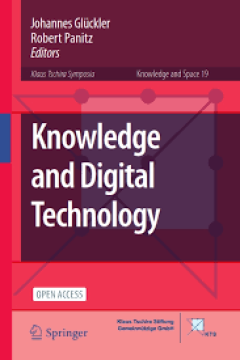
Knowledge and Digital Technology
This open access book explores the multifaceted interplay of technology, knowledge, and place. While digital technology is increasingly influencing our way of knowing, conversely it is itself the consequence of human creativity and local social interaction. Part I analyzes how digital technologies transform markets through artificial intelligence and decentralized blockchain models. Its contrib…
- Edition
- -
- ISBN/ISSN
- 978-3-031-39101-9
- Collation
- X, 289
- Series Title
- Knowledge and Space (KNAS, volume 19)
- Call Number
- 334 KNO
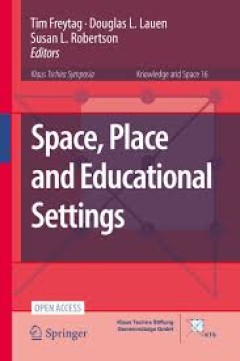
Space, Place and Educational Settings
This open access book explores the nexus between knowledge and space with a particular emphasis on the role of educational settings that are, both, shaping and being reshaped by socio-economic and political processes. It gives insight into the complex interplay of educational inequalities and practices of educational governance in the neighborhood and at larger geographical scales. The book ado…
- Edition
- -
- ISBN/ISSN
- 978-3-030-78597-0
- Collation
- X, 227
- Series Title
- Knowledge and Space (KNAS, volume 16)
- Call Number
- 334 SPA

Knowledge and Civil Society
This open access book focuses on the role of civil society in the creation, dissemination, and interpretation of knowledge in geographical contexts. It offers original, interdisciplinary and counterintuitive perspectives on civil society. The book includes reflections on civil and uncivil society, the role of civil society as a change agent, and on civil society perspectives of undone science. …
- Edition
- -
- ISBN/ISSN
- 978-3-030-71147-4
- Collation
- X, 316
- Series Title
- Knowledge and Space (KNAS, volume 17)
- Call Number
- 306 KNO
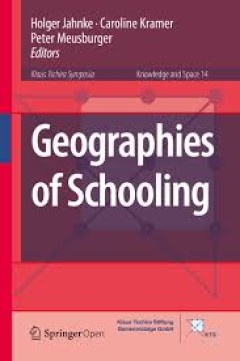
Geographies of Schooling
This open access book explores the complex relationship between schooling as a set of practices embedded in educational institutions and their specific spatial dimensions from different disciplinary perspectives. It presents innovative empirical and conceptual research by international scholars from the fields of social geography, pedagogy, educational and social sciences in Germany, the United…
- Edition
- -
- ISBN/ISSN
- 978-3-030-18799-6
- Collation
- XII, 359
- Series Title
- Knowledge and Space (KNAS, volume 14)
- Call Number
- 334 GEO
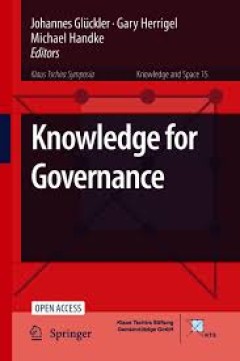
Knowledge for Governance
This open access book focuses on theoretical and empirical intersections between governance, knowledge and space from an interdisciplinary perspective. The contributions elucidate how knowledge is a prerequisite as well as a driver of governance efficacy, and conversely, how governance affects the creation and use of knowledge and innovation in geographical context. Scholars from the fields of …
- Edition
- -
- ISBN/ISSN
- 978-3-030-47150-7
- Collation
- XIII, 469
- Series Title
- Knowledge and Space (KNAS, volume 15)
- Call Number
- 334 KNO
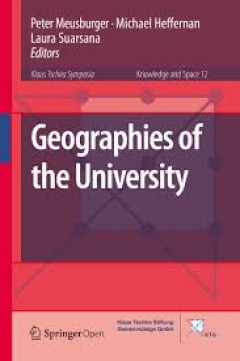
Geographies of the University
This open access volume raises awareness of the histories, geographies, and practices of universities and analyzes their role as key actors in today’s global knowledge economy. Universities are centers of research, teaching, and expertise with significant economic, social, and cultural impacts at different geographical scales. Scholars from a variety of disciplines and countries offer origina…
- Edition
- -
- ISBN/ISSN
- 978-3-319-75593-9
- Collation
- XIV, 676
- Series Title
- Knowledge and Space (KNAS, volume 12)
- Call Number
- 900 GEO

Cycling Through the Pandemic
This open access book provides insight on how the tactical urbanism has the capacity to influence change in mobility practices such as cycling. COVID-19 crisis prompted the public authorities to rethink the use of public space in order to develop means of transport that are both efficient and adapted to the health context and their effects on cycling practices in Europe, North, and South Americ…
- Edition
- 1
- ISBN/ISSN
- 978-3-031-45308-3
- Collation
- oer.unej.ac.id
- Series Title
- The Urban Book Series
- Call Number
- 324
 Computer Science, Information & General Works
Computer Science, Information & General Works  Philosophy & Psychology
Philosophy & Psychology  Religion
Religion  Social Sciences
Social Sciences  Language
Language  Pure Science
Pure Science  Applied Sciences
Applied Sciences  Art & Recreation
Art & Recreation  Literature
Literature  History & Geography
History & Geography